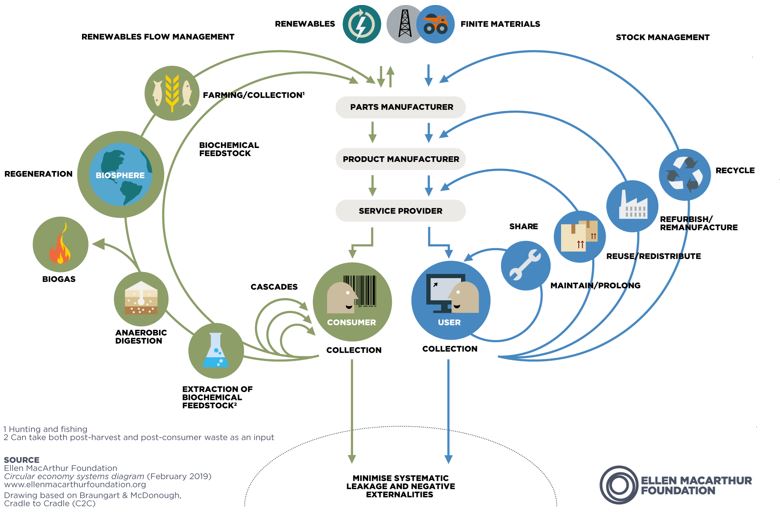Design specifications are non-binding rules used by diverse teams. They can be issued by both public and private entities and are applicable to different actors depending on their roles. Developing and sharing a (local) set of guidelines can support the transformation of the market towards embodied carbon neutral products. The efficacy of the guidelines shall be strengthened through inclusion in tender and procurement processes. The guidelines can also be used by financial actors as a basis for the development of performance-based financing.

Source: Ellen MacArthur Foundation
There is no need to reinvent the wheel: existing guidelines can be integrated with various resources to generate updated guidelines and specifications which are conducive to circularity. For example, the European common framework Level(s), based on a review of scientific literature by the Joint Research Centre, highlights the following design concepts for targeting hot spots for environmental impact:
- Efficient design: Optimize the design in order to improve material efficiency and minimise energy use.
- Optimised material utilisation and circular value: Consider feasibility of reusing existing elements, designing for minimal material use, minimizing waste generation during product manufacturing and construction.
- Extended service life: Consider options to extend the lifespan of significant components and to minimize the number of replacement and renovation cycles.
- Design for adaptability: Consider the potential of the design to adapt and be flexible to changing needs.
- Design for deconstruction: Consider how the design and information records about the project material bank can facilitate future end of life deconstruction in order to recover materials for reuse and recycling.
Comments ()